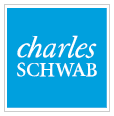by Nathan White, CIO
It was an amazing end year-end rally in everything. Throughout much of 2023, the prevailing narrative suggested that a select few mega-cap tech stocks were concealing an underlying fragility in the market. This portrayal proved accurate during certain periods of the year, notably following the banking crisis in the spring. At that point, the percentage of stocks outperforming the S&P 500 over the preceding three months reached a historic low.
As the rally progressed into July, indicators of market breath improved as the rally broadened out. Then the leadership started to narrow again during the fall correction as the 10-year Treasury yield surpassed 5%. By early November the median year-to-date return for most asset classes was flat to slight negative. The markets then staged a tremendous rally that was remarkably widespread. The percentage of stocks above their 50-day moving averages surpassed 90% for the first time since June 2020 (NDR 1.2.2024).
The median gain across asset classes saw a substantial increase, rising from -1.1% on November 11 to +12 by year end. In just a few weeks, 2023 transformed from being one of the weakest years on record to an above-average performance.
Risks for 2024:
Weakening economy. With inflation subsiding the focus is now on slowing economic conditions. Everyone is cheering a soft landing by the Fed but what if can’t really take off now either? If the economy slows too much or stalls out the Fed would ease monetary conditions alleviate the situation but would then enable another round of the second risk:
Resurgent inflation. Inflation is falling and is poised to fall further and that is a good thing, but price levels remain high. Let’s hope we don’t repeat some version of the 1970’s with multiple bouts of inflation. I believe it would be better to keep rates around where they are now and let the economy adjust as opposed to a return to near zero interest rates. The ever increasing national debt and deficits that enlarge it are a ticking time bomb that everyone ignores which leads to the third risk:
Political and geopolitical risks. Doesn’t this always seem to be the case though? It is election year, and the sparks are certainly going to fly like never before. Over my entire career, without fail I have seen some clients get out of the markets in elections years due to political bias and worries. This leads to the last and most important risk:
Being out of the market. Remember that the market always tries to knock you out of the game with a never ending tale of worries. But those who can stay the course are literally rewarded with the miracle of compound interest. Last year’s quick year-end rally is a case in point. Don’t miss the action.
Model Portfolio Performance and Positioning
Most of our strategies outperformed relevant benchmarks for the year. Our overall equity allocations have outperformed even with a small amount of dry powder in the form of short-term Treasuries to protect against and take advantage of weaknesses that fortunately did not unfold.
The Managed Income model was up about 4.6% for the quarter and was up 4.2% for the year. The allocation was extremely conservative during the year. This was better than long-term Treasury bonds (3.1%) but little behind Barclays Aggregate Bond Index that benefitted from the year-end rally in corporate credit. The bond market has seen tremendous volatility with the 10-year Treasury yield spiking to 5% in late October and then retreating quickly to below 4% by the end of the year. It was an abrupt about face to say the least. The markets are currently pricing in about six quarter point rate cuts (about 1.5%) by the Fed in 2024. Our bond exposure is still overweight in short term securities for protection and safety, but we are looking at potential changes as the new year unfolds. We will be looking to gradually add longer term bonds on any weakness. The sharp year-end rally narrowed the already small spread between safe securities and corporate and/or high yield fixed income, making the latter less attractive. The market is pricing in an all clear no recession scenario, but as long experience has shown this is never a certainty and real risks remain. Managed Income is first concerned with protecting capital and primarily only adds risk when conditions get extreme (i.e. recessions).
Within our equity and growth strategies, the Liquidity Factor Strategy was up 12.6% for the quarter and was up 24.7% for the year. This strategy uses a proprietary method to take advantage of pricing anomalies in stocks that are less liquid and relatively ignored by the market. The strategy is comprised of ten holdings that see little turnover and was virtually unchanged for most of the year. There was one holding change made at the beginning of the year by adding IPG Photonics Corp (Semiconductor Equipment & Materials). The primary exposures remain in the Consumer Cyclical and Healthcare sectors. The Relative Strength ETF Strategy was up about 6.4% for the quarter and about 10.8% for the year and was used as a hedge to mitigate risks that fortunately were not realized. We made a change within the strategy in October, and it is by allocating to Mega Caps and Treasury Bills but have swapped the Mega Caps for Small Caps to start the year.
Fundamental 20 was up 11.1% for the quarter and was up 36.4% for the year. It was the top performing segment for the year. This strategy focuses on highly profitable companies that have excellent value compared to their cash flows and/or net income. We look for companies that are using their capital efficiently to make money. We added six new names to the strategy in January: Carter’s Inc (Retail Apparel), Molina Healthcare (Healthcare Plans), Marathon Petroleum (Oil & Gas Refining and Marketing), Nucor Corp (Steel), Premier Inc (Health Information Services) and Williams-Sonoma (Specialty Retail).
The Fast Movers strategy was up 15.7% for the fourth quarter and was up just over 32% for the year. This is our most aggressive strategy that actively seeks high growth and therefore can experience regular large drawdowns. The strategy is now allocated to mostly technology and communication services positions. The strategy now holds eight technology, two communication services, and one utility position. We added positions in Splunk Inc (Infrastructure Software) and Atlassian Corp (Application Software) and increased our holdings of Zscaler (Infrastructure Software), Adobe (Infrastructure Software) and Intel (Semiconductors).
The Top Flight Model Portfolio was up 11.8% for the quarter and was up 29.2% for the year. By way of comparison for the year, this was better than the S&P 500 (+26.3%), Small Caps (+16.9%), and the Dow Jones Industrials (+13.7) but behind the NASDAQ (+43.4%). Top Flight continues to be comprised of 25% Fast Movers, 40% Fundamental 20, 20% Liquidity Factor, and 15% ETF RS. Among our overall equity holdings, the top five performers for the third quarter were Gap Inc, Crowdstrike, CAVA Group, Toll Brothers, and Zscaler Inc. The worst performers were a mixed group of Align Technology, Maravai Lifesciences, Kinsale Capital Group, Antero Resources and Brio-Rad Laboratories.


